10 Popular Marketing Terms That Mislead More Than Help
Marketing Isn’t About the Product — It’s About the Feeling
You’ve probably heard the phrase, “marketing is the art of selling an idea, not just a product.” And it’s true — disturbingly true, in fact. A perfect example comes from an early episode of Mad Men, where the smooth-talking ad genius Don Draper is trying to pitch cigarettes. Faced with the challenge of promoting a product that was, even back then, known to be harmful, he didn’t invent a lie. Instead, he leaned on something that sounded comforting — “It’s toasted.”
Here’s the kicker: every cigarette brand toasted their tobacco. It wasn’t special. It wasn’t unique. But Draper’s phrasing made it feel like it was. And that’s the whole point.
People don’t just buy things — they buy stories, moods, emotions. Marketing doesn’t need a groundbreaking feature or a better formula. All it needs is a message that sounds good — even if it’s vague or means absolutely nothing. Words like “artisanal,” “handcrafted,” or “clean energy” often don’t say much on their own, but they tap into what people want to believe.
You don’t have to lie to sell something. You just have to frame the truth in a way that feels better than reality.
10. The Truth About “Corinthian Leather” — It’s Just Regular Leather

You know that unmistakable new car smell? That strange, oddly addictive blend of materials — maybe it’s the plastics, maybe it’s the adhesives, maybe… it’s the luxurious Corinthian leather?
Sounds classy, doesn’t it? Rich. Refined. Straight out of ancient Greece, perhaps — from the legendary city of Corinth? That would explain the name, right? A place steeped in history surely knows how to treat a cowhide.
Well… not exactly.
Here’s where it gets interesting: Corinthian leather isn’t a real thing. It’s not a special grade. It doesn’t come from a special region. It’s just… leather. But the term? That was marketing gold — a phrase invented by Chrysler’s advertising team back in the 1970s. The idea was to give their car interiors a touch of mystique, a little flair of exotic luxury.
And who better to sell it than Ricardo Montalbán, aka Khan from Star Trek? With his velvety voice and suave presence, he could make anything sound irresistible. And when he uttered the words “soft Corinthian leather”, people didn’t just hear leather — they felt elegance.
The genius behind the phrase? It was all about perception. Corinthian leather didn’t need to be rare or premium. It just needed to sound like it was. And that’s the trick. People don’t buy materials — they buy the emotion tied to the name.
9. Sushi Grade Fish: A Marketing Term That Doesn’t Mean What You Think

Sushi is a global phenomenon, with nearly five million Americans enjoying it at least once a month. It’s the most popular Japanese cuisine in North America, and for many, it’s a culinary experience worth mastering. Some enthusiasts even try to make sushi at home, though it takes years—sometimes over a decade—to truly perfect the craft in Japan. But when it comes to making sushi, one question always arises: Is the fish sushi grade?
Here’s the catch: “Sushi grade” is not a regulated term in North America. While it sounds official and reassuring, the truth is that it doesn’t mean anything legally. The confusion stems from the fact that the FDA has guidelines for serving raw fish, but these guidelines don’t govern the use of the term “sushi grade.”
According to the Parasite Destruction Guarantee, any fish served raw must be frozen and stored at -20°C (-4°F) or below for at least 168 hours (7 days). This process ensures that parasites in the fish are killed, minimizing health risks. While this sounds like the standard for “sushi grade,” it’s important to note that the FDA does not regulate the label itself. In other words, anyone can claim their fish is “sushi grade,” regardless of whether it meets these freezing standards or not.
The term “sushi grade” first emerged in the early 2000s as a clever marketing strategy. At the time, sushi restaurants were expanding their menus beyond traditional options like tuna. To encourage restaurants to take risks and offer other types of raw fish, the term “sushi grade” was coined. It sounded professional and trustworthy, giving chefs and customers alike the illusion of safety and quality. However, the term was never meant to be a guarantee of freshness, safety, or even taste.
What does this mean for sushi lovers? If you’re buying fish labeled “sushi grade,” it’s important to do your research. Look for reputable vendors who follow proper freezing protocols and prioritize freshness. But even then, the label itself is no guarantee. The responsibility ultimately falls on the consumer to ensure the fish they’re buying is safe to eat raw.
The story of “sushi grade” highlights how marketing can shape perceptions, even in the culinary world. While sushi is a centuries-old tradition, the modern sushi industry has adapted to meet demand, sometimes at the expense of clarity and transparency. So, the next time you see “sushi grade” on a menu or package, remember: it’s a term that sells fish, but it doesn’t necessarily sell safety.
8. The “Superfruit” Hype: Just Marketing in a Healthier Wrapper
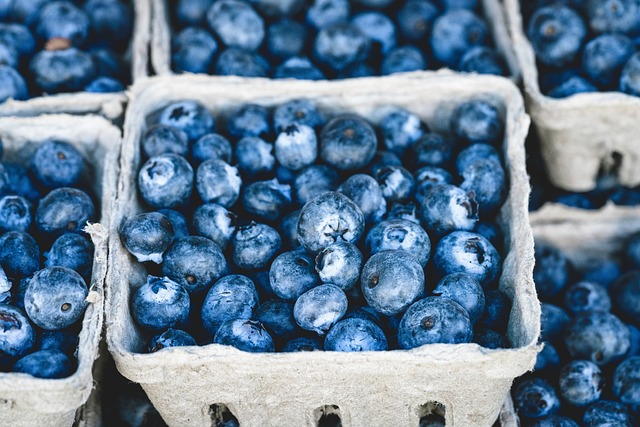
You’ve probably seen them on sleek juice bottles, fancy yogurt cups, or bright supplement packages — superfruits. They sound powerful, exotic, and maybe even a little magical. From acai berries plucked deep in the Amazon, to goji berries straight out of the Himalayas, these fruits are often wrapped in claims of antioxidant power, cell-repairing nutrients, and near-mythical health benefits.
But here’s the twist: “Superfruit” isn’t a scientific term. It’s a marketing invention — a buzzword meant to make regular fruits sound like they just came from a superhero’s grocery list.
Sure, some of these fruits — like pomegranate or blueberries — do contain nutrients that are good for you. But so do apples. And bananas. And kiwis. Calling one a super fruit doesn’t make it leap over the others nutritionally. It just makes it more marketable.
In fact, the European Union cracked down on this kind of hype back in 2007. Unless a company could back up the “super” claim with actual scientific proof of health benefits, they couldn’t legally use it on packaging. That says a lot, doesn’t it?
The term “superfruit” is vague by design. It sounds healthy — even heroic — but it’s not really about what the fruit is. It’s about how it makes you feel when you read the label.
7. The Salty Truth: All Salt Is Sea Salt, Actually
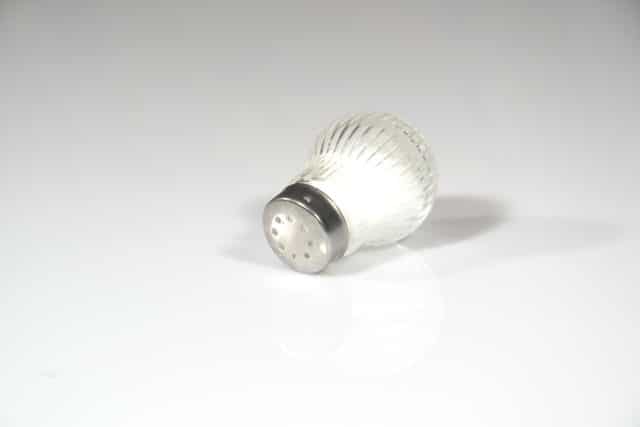
Next time you’re wandering through the grocery aisle and spot a bag of “Himalayan pink salt” or “hand-harvested Celtic sea salt”, take a moment. Admire the artisanal labels, the soft pastels, the rustic fonts whispering natural. It all seems so refined, so healthy — so different from regular old table salt.
But here’s the kicker: all salt is sea salt.
Seriously. Whether it’s rock salt mined from ancient seabeds or evaporated crystals collected from modern oceans, every grain of salt on your dinner table was, at some point, part of the sea. Even those shiny white cubes in your salt shaker? Yep — they’re the long-lost relatives of prehistoric oceans that vanished eons ago.
Chemically, salt is just sodium chloride (NaCl). All that pink, black, or gray coloration you see in specialty salts? That’s due to trace minerals like iron or activated charcoal — not some magical property bestowed by the Atlantic breeze.
Sure, there are textural differences. Sea salt flakes crunch differently than fine table salt. But nutritionally? Virtually identical. And those fancy labels? Often just clever branding, not proof of superior quality.
In fact, the term “sea salt” has become such a marketing buzzword, it’s now slapped onto chips, caramels, and even chocolate bars — as if the salt itself somehow makes it healthier or more authentic. It doesn’t. It just sounds better.
📌 Fun fact: Even Himalayan pink salt is mined from what was once a primordial sea that dried up around 250 million years ago. It’s technically ancient sea salt in disguise.
So next time a label proudly boasts “contains sea salt”, smile. You now know the truth: they all do.
6. Angus Cattle: A Breed, Not a Guarantee of Quality
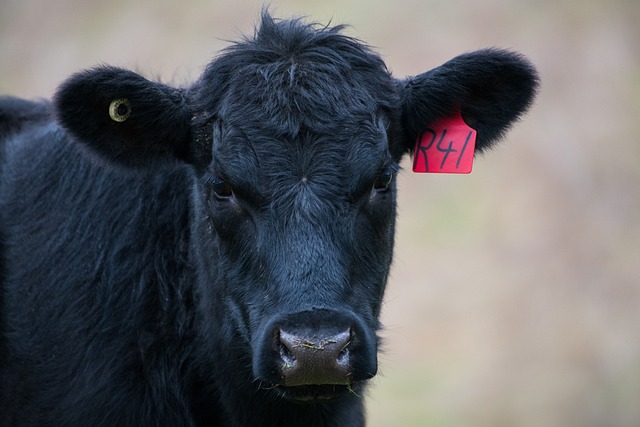
When it comes to steak or burgers, people love to hear about the quality of their beef. Restaurants know this, so they pull out all the stops, tempting customers with phrases like “USDA Prime” or, even fancier, “Certified Angus Beef.” The word “Angus” alone sounds premium, and the label “Certified Angus Beef” seems like a stamp of approval. But here’s the truth: Angus is just a breed of cattle, and it doesn’t automatically mean the beef is better.
First, it has to come from an Angus cow, which is a breed of cattle known for its black coat (though some Angus cows can have a small amount of white). To qualify as “Certified Angus Beef,” the meat must meet specific standards for marbling (the amount of fat within the muscle), fat content, and muscle thickness. These standards are set by the Certified Angus Beef brand, which is a marketing organization, not a government-regulated body.
But here’s the kicker: Angus beef isn’t inherently better than other types of beef. In terms of taste, you probably wouldn’t notice any difference between Angus beef and another breed of cattle if the fat content and marbling are the same. The “Angus” label is primarily a marketing tool, designed to make consumers think they’re getting something special. And while Certified Angus Beef is inspected to ensure it meets certain quality standards, the Angus breed alone doesn’t guarantee anything about the beef’s flavor or tenderness.
This distinction becomes especially clear when you look at the difference between Angus beef and Certified Angus Beef. Certified Angus Beef is held to strict standards, but if someone is selling plain “Angus beef” without the certification, it could be of any quality. This is where fast food companies often come into play. Many chains market their burgers as “Angus burgers,” but unless they’re specifically labeled as “Certified Angus Beef,” there’s no guarantee the meat meets the same standards as higher-quality cuts. In many cases, you’re paying a premium for beef that’s no better than what’s already on the menu.
The bottom line? Angus is just a breed of cattle, and while Certified Angus Beef has specific quality standards, the label itself is more about marketing than meat quality. If you’re looking for great beef, focus on factors like marbling, fat content, and cooking method, rather than just the breed of cattle it comes from.
5. Mushroom Marketing Magic: Portobello, Cremini, and Button Are the Same Fungus
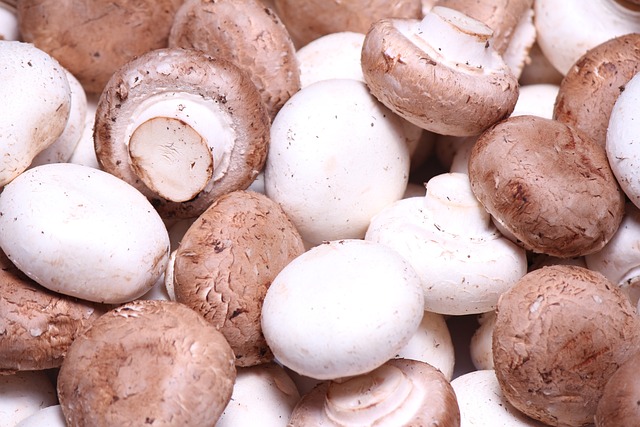
Next time you’re at a fancy restaurant and the waiter proudly announces the portobello mushroom steak, you might feel like you’re indulging in something rich, exotic, and elevated. But spoiler alert: that $16 gourmet fungi is the same thing as the $2 box of white mushrooms sitting in your grocery store.
Yep — portobello, cremini, and button mushrooms? They’re all the same species.
Their scientific name is Agaricus bisporus, and what sets them apart isn’t where they come from or how they’re grown — it’s how old they are.
- White button mushrooms are the youngest stage: mild, pale, and cute.
- Cremini mushrooms (sometimes spelled “crimini”) are the same mushrooms, just a little older and browner.
- Portobellos are the seniors of the group — fully matured, larger, and meatier in texture. That’s it.
So when marketing slaps a “cremini” or “portobello” label on that mushroom medley, it’s not selling you a different product — it’s aging it like fine wine (minus the actual fermentation part). The difference is texture and appearance, not species or nutritional value.
🍄 Fun fact: If you’ve ever wondered why mushroom burgers use portobellos — it’s simply because they’re bigger and can mimic the shape and texture of a beef patty. Not because they’re some rare mushroom royalty.
The mushroom industry, worth over $50 billion globally, thrives in part thanks to clever naming and branding. It’s a culinary illusion — same mushroom, different marketing.
4. “No Tears” Shampoo: A Marketing Term That Didn’t Mean Much

Ever been in the shower, shampoo in hand, only to accidentally get soap in your eyes? The burning sensation is enough to make you vow never to skip the “no tears” label again. But here’s the truth: “no tears” shampoo isn’t as protective as it sounds. In fact, the term is more about clever marketing than any specific scientific formula.
For years, the concept of “no tears” shampoo was vague at best. There was never a standardized definition for what “no tears” actually meant, and different brands interpreted it however they wanted. Some focused on making the shampoo less irritating to the eyes, while others marketed it as a detangler to prevent “tears” in the form of hair breakage or tangles. Yes, you read that right—some commercials even implied that “no tears” meant your hair wouldn’t rip apart as you combed it, saving you from the emotional trauma of a bad hair day.
The confusion didn’t stop there. Johnson & Johnson, one of the most famous brands of baby shampoo, used to include formaldehyde in their “no tears” formula until 2013. While formaldehyde was used as a preservative, it’s hardly the kind of ingredient you’d want near your eyes—or anywhere on your body, for that matter. This raises an obvious question: how “tear-free” could a product be if it contained a chemical known to irritate and damage mucous membranes?
Eventually, Johnson & Johnson moved away from formaldehyde, claiming their updated formula was truly “tear-free.” They explained that the shampoo’s molecules were designed to be larger and less harsh, reducing the likelihood of irritation if the shampoo accidentally got into a child’s eyes. But even with this change, the term “no tears” remained open to interpretation. For some, it meant no burning sensation in the eyes. For others, it meant no hair breakage. And for many, it was simply a reassuring label that gave parents peace of mind—whether or not it delivered on its promise.
The truth is, “no tears” shampoo doesn’t have a specific formula or standard. It’s a marketing term designed to appeal to parents and consumers, but it doesn’t guarantee that the shampoo is completely harmless or irritation-free. In the end, the best way to protect your eyes (and your hair) is to use shampoo carefully and rinse thoroughly—no matter what the label says.
3. The Truth About “Cage-Free” and “Free-Range” Eggs Might Crack You Up

Staring at the egg section in your local grocery store feels like navigating a maze of buzzwords: organic, omega-3, cage-free, free-range, and the always ambiguous farm fresh. But are these labels actually telling you anything? Well… not really.
Let’s break it down — yolk-style.
🥚 Cage-Free Doesn’t Mean Cruelty-Free
Sure, “cage-free” sounds like hens are frolicking through grassy meadows. In reality, it just means they aren’t confined to individual cages. Instead, they’re packed inside large indoor facilities — where they can technically roam, but often just fight for space, breathe poor-quality air, and never see daylight. Think of it as a crowded warehouse with feathers.
🐔 Free-Range? It’s… Theoretically Free
“Free-range” conjures up images of chickens pecking through pastures, right? Not exactly. The requirement is simply that the facility has a door to the outside. That’s it. There’s no rule saying the door has to be open or that the “outside” is anything more than a tiny concrete patio. It’s freedom on paper — not necessarily in practice.
✅ Pro tip: If you care about animal welfare, look for “Certified Humane” or “Pasture-Raised” labels. These usually come with verified standards for space, outdoor access, and better living conditions.
🚫 “Farm Fresh” & “Natural” Mean Absolutely Nothing
Every egg is from a farm, right? So “farm fresh” is just marketing fluff. Same with “natural” — unless someone is laying synthetic eggs in a lab, all eggs are, by definition, natural.
2. Saltwater Taffy vs. Regular Taffy: The Same Candy, Different Name
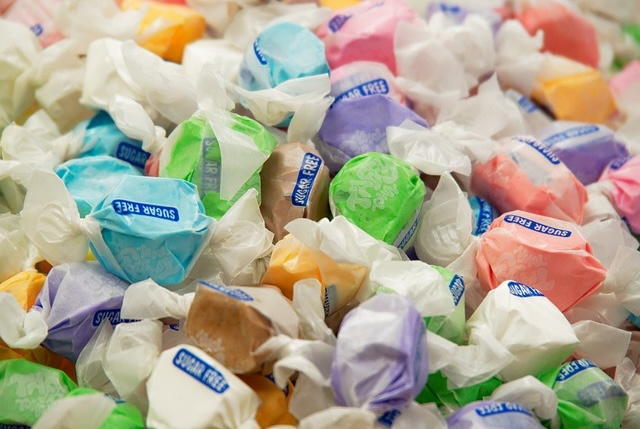
Let’s settle the age-old debate: saltwater taffy or regular taffy? Assuming you’re even a fan of taffy in the first place, you might be surprised to learn that there’s no actual difference between the two. That’s right—saltwater taffy is just a clever name, and it’s not even made with saltwater. So why the distinction? The story behind the name is as sweet as the candy itself.
According to legend, the term “saltwater taffy” was born in Atlantic City, New Jersey, in the late 19th century. One fateful day, a taffy shop located near the beach was flooded by a storm. The shopkeeper’s stock of taffy was soaked with seawater, leaving it a sticky mess. When a customer came in and asked to buy some taffy, the shopkeeper, in a humorous attempt to save the situation, joked that all he had left was “saltwater taffy.” To his surprise, the customer didn’t mind and bought it anyway. The name stuck, and soon, “saltwater taffy” became a popular term for the chewy, sugary treat.
In reality, saltwater taffy is just regular taffy with a fancy name. The candy itself is made from sugar, corn syrup, butter, and flavorings, and it’s pulled and stretched to create its signature chewy texture. The only “saltwater” involved is the legend of the flooded shop—and maybe the occasional seaside breeze if you’re lucky enough to buy it near the ocean.
The term “saltwater taffy” became so popular that it’s now synonymous with taffy in general, especially in tourist-heavy areas like Atlantic City. But don’t let the name fool you—whether it’s called saltwater taffy or just taffy, it’s the same delicious treat that’s been delighting candy lovers for generations.
1. The Word “Teenager” Didn’t Exist Until the 1940s — Seriously

Today, the word teenager feels as natural as texting or TikTok. But rewind the clock to the 1930s, and if you said “teenager” out loud, you’d get puzzled stares. That’s because the concept of a teenager literally didn’t exist — not until marketers in the 1940s realized they had stumbled on a goldmine.
🕰️ Before Teenagers, There Were Just… Kids and Adults
For most of human history, once you hit your early teens, you were expected to work, marry, or join the family trade. There wasn’t a middle ground. But with urbanization, mandatory schooling, and longer lifespans, a new life stage emerged. Young people were no longer rushing into adulthood — they were stuck in between.
Enter: the teenager. A little rebellious, a little dreamy, and very eager to stand out.
📣 Marketing Made “Teen” Culture Cool
This new in-between phase came with its own music, fashion, slang, and — jackpot — spending power. Brands quickly realized this group wanted its own identity and began selling to teens like never before. Think rock and roll, leather jackets, jukeboxes, and that timeless urge to roll your eyes at adults.
The term “teenager” wasn’t just a label — it was a carefully crafted identity that revolutionized pop culture and advertising.

























